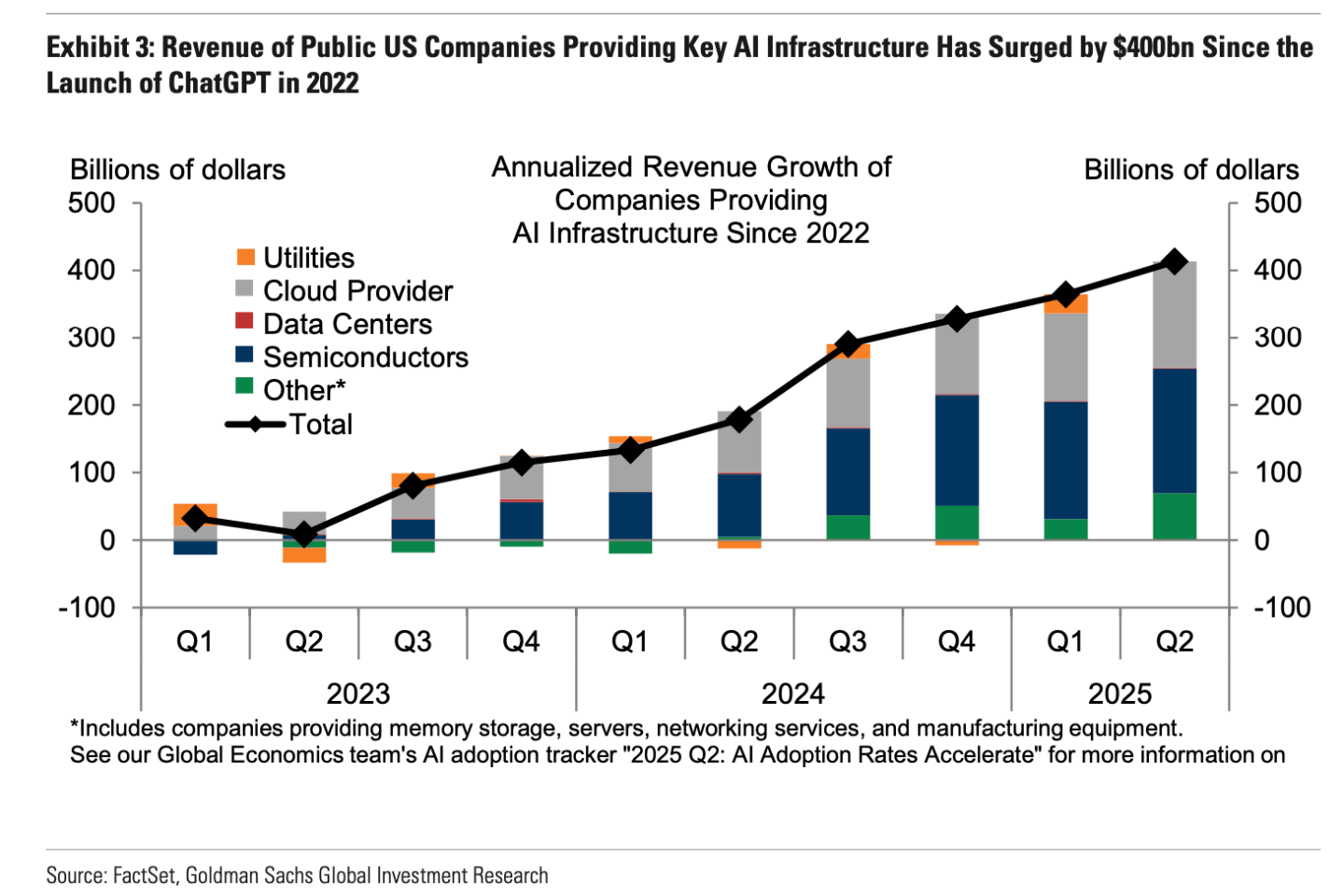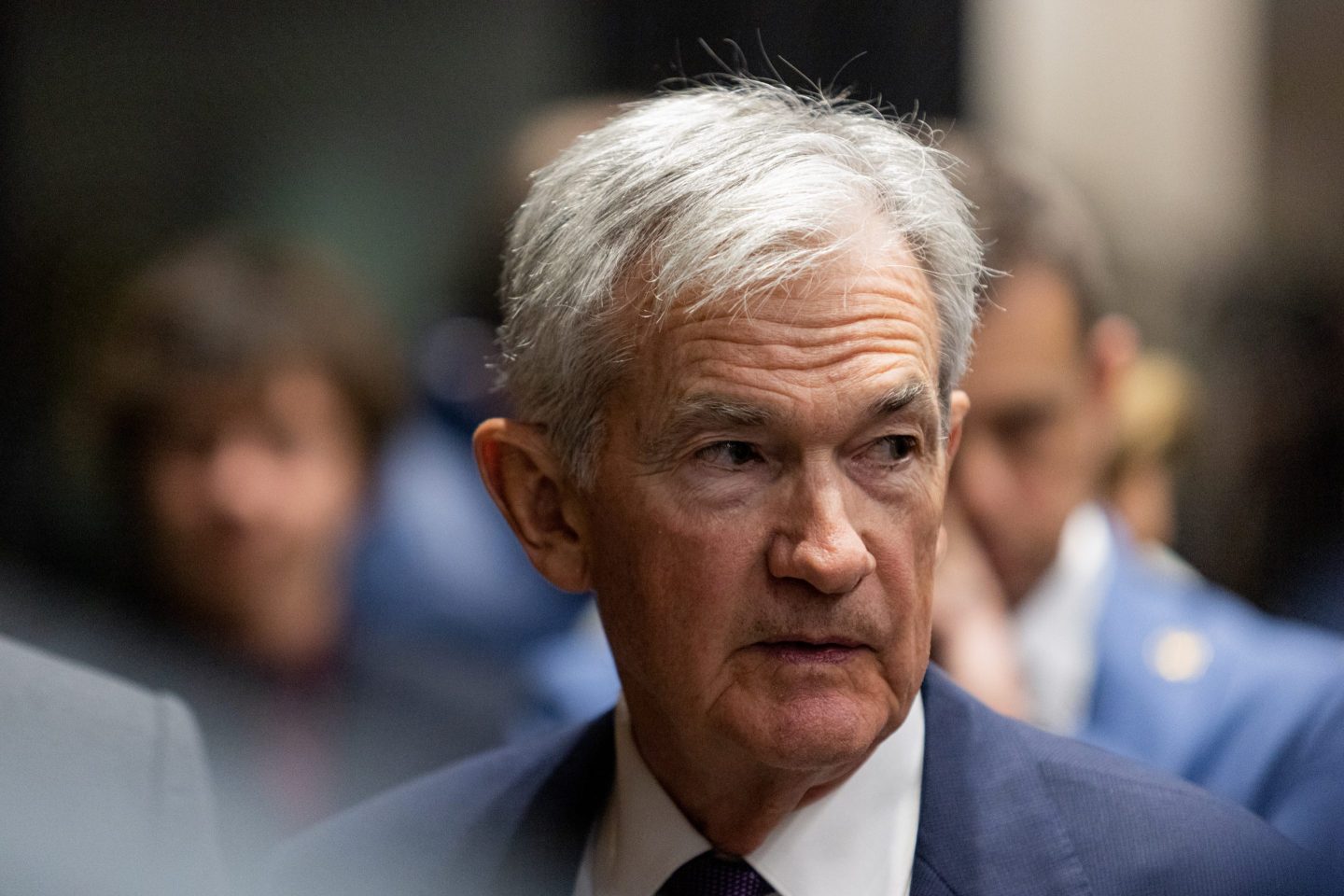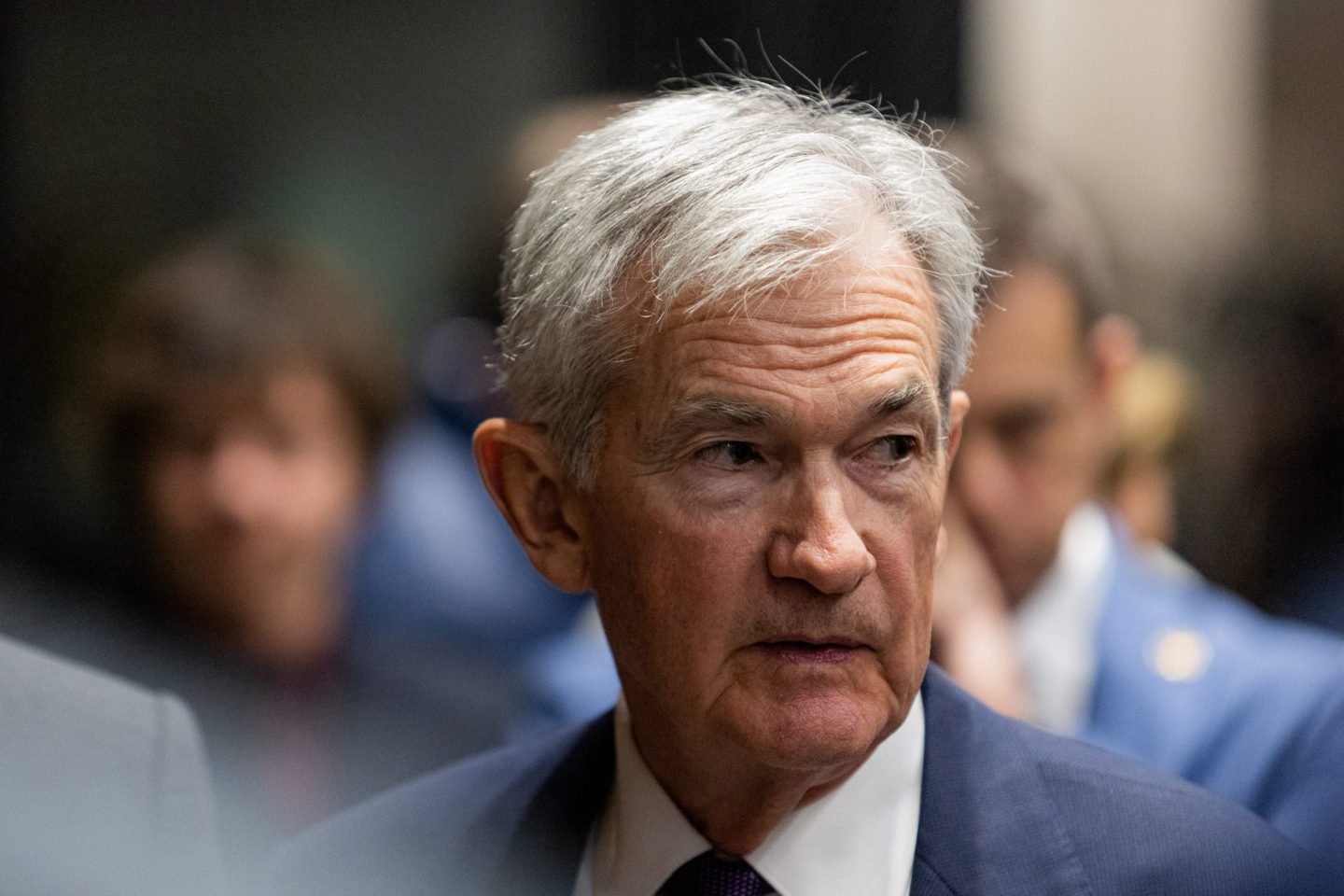Artificial intelligence (AI) has been hyped to the skies as the “fourth industrial revolution” and the thing that will wipe out 50% of white-collar workers’ jobs. There’s just one problem with that, according to Goldman Sachs: It doesn’t exactly show up in the economic data.
Elsie Peng, Joseph Briggs, and Sarah Dong, from the team of chief economist Jan Hatzius, explain in a Sept. 13 research note the “measured impact” on GDP from AI is an “intermediate impact” from the Bureau of Economic Analysis (BEA), so it only counts toward final demand when a final product is sold. For example, a semiconductor only shows up in GDP when, say, a laptop is purchased. This means billions of dollars in AI-enabled economic activity isn’t being measured, Peng, Briggs, and Dong argue.
Since the launch of ChatGPT in 2022, they calculate, the dramatic surge in revenues attributed to AI infrastructure has boosted “true GDP” by a staggering $160 billion. This figure highlights AI’s transformative role as a growth engine—but underscores a confounding gap in official government statistics. According to Goldman Sachs, most of AI’s real economic contributions have remained largely invisible in U.S. GDP numbers to date.
The research draws on company reports and government data, revealing spending on AI infrastructure by U.S. firms has soared, a $400 billion increase since 2022. A notable chunk of this spending has been focused on information processing equipment, which spiked at a 39% annualized rate in the first half of 2025.

Digging into ‘true GDP’
To parse out the real domestic economic impact, the Goldman Sachs team adjusted company revenue data by subtracting the effects of inflated prices, foreign sales of equipment produced abroad, and input imports. This resulted in the $160 billion figure, about 0.7% of U.S. GDP since 2022, which translates to roughly 0.3 percentage points of annualized growth.
The same analysts calculate the amount officially counted in measured GDP is far lower—just $45 billion, or 0.2%, since 2022. That reflects only about 0.1 percentage points of annualized growth.
The team also analyzed the four main channels through which AI affects the US economy. First is investment in equipment, such as semiconductors and servers; second is structures such as data centers and power facilities. Third comes intellectual property, including spending on software and R&D, and finally net exports of AI-related goods and services.
However, the analysts warn much of the investment surge was driven by imports, meaning it didn’t contribute directly to net GDP growth, and it grew especially rapidly this year, suggesting it was front-loaded ahead of tariff hikes.

A picture coming into view
Goldman Sachs’ analysis comes as policymakers grapple with how to accurately track the economic impact of a rapidly evolving technology. The analysts caution that while AI is indeed driving meaningful growth, much of it remains hidden from standard indicators.
In the middle of this summer, The Wall Street Journal’s Christopher Mims noted a striking surge in AI infrastructure spending, arguing it was adding more to GDP growth than consumer spending, the backbone of the American economy, responsible for some two-thirds of GDP as measured by the BEA. Retail sales are ticking up, most recently at 0.6% in August, but the American consumer is widely understood to be beleaguered. A picture is emerging of a significant amount of GDP coming from the booming AI sector, and a fatigued economy everywhere else, with slow job growth. If there is an AI bubble, and if that pops soon, a lot could go down with it.
For investors and business leaders, the takeaway is that the U.S.’s AI wave could be more powerful, and potentially more sustainable, than the headline numbers suggest. As the government adapts its statistical methodologies, a fuller picture of AI’s economic footprint could eventually emerge—but for now, it remains largely in the shadows of official calculation.
For this story, Fortune used generative AI to help with an initial draft. An editor verified the accuracy of the information before publishing.












